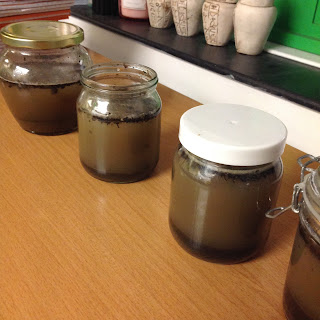In 3V over the past two weeks we have been working on the conclusion of our Rocks and Soils topic. We have been finding out about different soils, and the various components that are found in all soils. We designed experiments to find out what kind of soil we have in the grounds at Swan Lane, and what proportions of the different components of soil are found in our soil samples.
We ventured outside in order to collect a variety of soil samples, and then tested these to find out if the soil was sandy, clay-based or loamy. Soils with a large clay component will roll easily into a ball or sausage shape, because the small particles in clay soils tend to stick together and retain moisture. Sandy soils feel gritty and don't stick together easily, so it is very hard to roll them into a shape. This is because sandy soils have larger particles which allow water to drain more freely. Loamy soils have a balance of clay and sandy components: they will form a shape but it will not stick together very well.
Once we had gauged the soil types in our samples, we decided to explore further. We wanted to know more about the different proportions of the component parts of soil, so we designed an experiment to find out. We put the soil samples into clean glass jars, topped up with water, mixed together and waited.
We are hoping that the water will help the soil to separate into different layers, so that once the mixture settles, we can see the component parts of our soil samples.










No comments:
Post a Comment